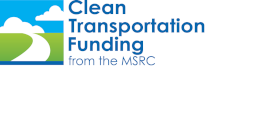 Since childhood, Randall Pasek has understood how air pollution can impact daily life in Southern California. He has taken his desire to improve air quality and his love for cars and translated his passions into a highly successful career that has benefitted all Californians.
Since childhood, Randall Pasek has understood how air pollution can impact daily life in Southern California. He has taken his desire to improve air quality and his love for cars and translated his passions into a highly successful career that has benefitted all Californians.
Randall began his career in the air quality management field in 1985 when he joined the staff of the California Air Resources Board. For 18 years, he held various positions within the agency, starting in the stationary source division. Over the years, he worked in the research division as part of the atmospheric processes section, looking at ways to model and measure air pollutants, as well as on California’s plan to address diesel particulate matter in the late 1980s, and heading the emission inventory group for the entire state.
He first became sensitive to Southern California’s air quality problem when he moved with his family to Hacienda Heights in 1968. One particularly hot and sunny day, he woke up and discovered that he couldn’t see across the cul-de-sac where he lived because the haze was so thick. “One month later, we had our first rain storm and I saw how close Mt. Baldy was,” Randall recalled. “I knew the mountain was there, but I couldn’t actually see it until the rain cleared out the pollution. I thought, this air problem is really messy and we need to do something about it.”
About this time, he also became interested in cars, particularly muscle cars. An older brother of one of his friends who lived across the street had modified a 1955 Chevrolet Bel Air, so he spent a lot of time learning about how engines worked.
In college, Randall knew he wanted to work on improving the environment, so he studied chemical engineering at UC Davis. However, his first job out of college working for an oil company was less than satisfying. “My job was to work on getting a half-percent better yield from a process for gasoline, which would have resulted in tens of millions of dollars in profits for the company, but it was tough to get out of the bed in the morning for a half-percent just to make someone more money.”
Randall knew he had a higher calling – he wanted to be a steward for the environment. He went on to earn his Ph.D. in mechanical engineering from UC Davis and an MBA from the Ecole National des Ponts et Chaussées International School of Business in Paris, France. Now, he is motivated by his work to make the air clean.
Since he always wanted be on the ground working closely with the people he was affecting with his air quality strategies, Randall joined the South Coast Air Quality Management District staff in 2006. He manages the off-road section of the Mobile Source Division, where he jokes, he works on regulatory policies for anything that “can’t legally run on the road” including construction equipment, ships, planes and trains.
Shortly after he joined the AQMD, he saw first-hand how important incentive funding is to implementing clean air projects. “One of the great things about the AQMD is their incentive-based programs, and one of my first projects here was using incentive funding to identify high polluters and encourage them to scrap their vehicles.
Later on, he worked with the MSRC on its Showcase Program, which is designed to demonstrate retrofit technology to help clean up dirty diesel construction equipment. This is where he first learned about what the MSRC does, which spurred his desire to continue working on programs that provide incentive funding, like the MSRC.
Randall joined the MSRC’s Technical Advisory Committee (TAC) last July. “The MSRC gives funding to get people to do projects they normally would not do to clean up the air. And in the process they obtain additional benefits beyond clean air by getting, for example, cleaner, more efficient and reliable vehicles – it’s a win-win for everyone,” he explained. “To be a part of this is very satisfying.”
According to Randall, the TAC is sort of a litmus test for the MSRC – the TAC members are the closest to the technology and the programs, so they understand what works best. “We provide the MSRC with advice on the best way to spending its funding – what will give them the best ‘bang-for-their-buck.’” One of the ways the TAC helps the MSRC do this is by recommending the project categories and funding levels for the MSRC’s annual Work Program. Last fall, the MSRC conducted four county-wide public workshops to help get input from the public on ways to allocate the MSRC’s funding. Randall helped lead these workshops by setting the stage for the discussion on the state of the air in the South Coast.
“The workshops were a great way to cast a wider net to learn about other opportunities that are out there and learn about what people are working on. Plus, you want to have the public support what you are doing, so the workshops offered a way to achieve this as well,” he explained. Randall said that the feedback they received from the workshops helped inform the TAC and MSRC’s Work Program development process.
Randall believes that the South Coast region has the most challenging air quality issues in the country, so the region must be ahead of the rest of the country in cleaning up the air. “To lead the nation, we need to do more exotic things. We need to work on advancing technology to help get us there, and the MSRC is an important player in pushing technology forward and encouraging people to try new technology.”
